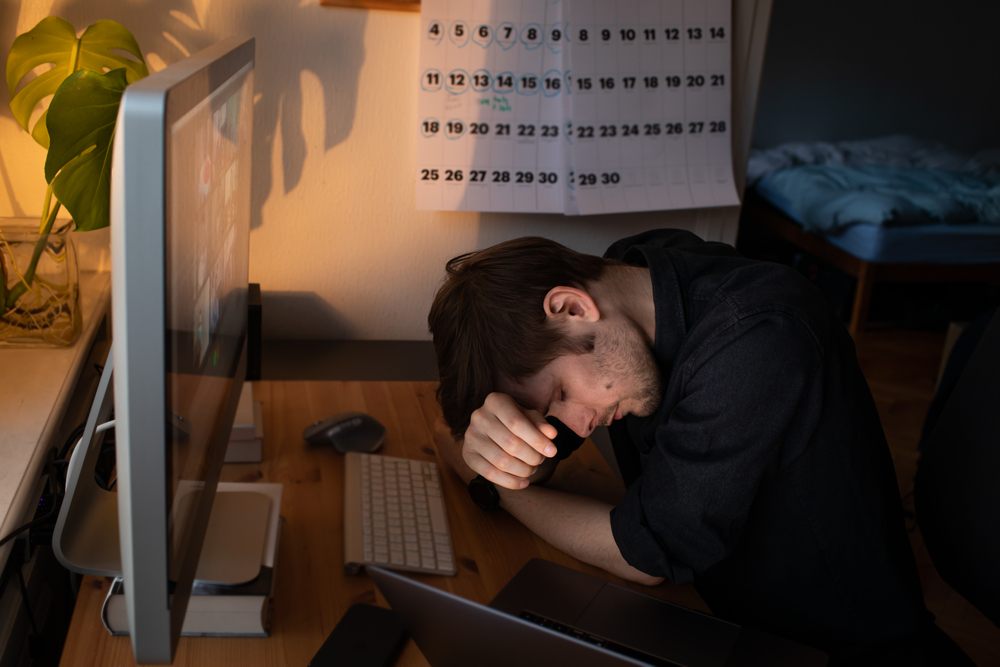
16 Sep 2022
No matter what kind of employment you do, everyone has had to adjust to 2020. Our daily lives are very different from last year since an estimated 56% of the American workforce has a job that can be done remotely (at least in part). Working from home has become the new norm for many Americans, which has given rise to a new issue that many leaders are worried about: "Work from Home Burnout."
More than 69% of workers are suffering burnout symptoms while working from home, an increase of almost 20% from a similar study taken in early May. This trend is having an effect on workforce health as well as business productivity. identifying the symptoms of burnout or distraction in the workplace is crucial to the physical and mental health of an employee
Is burnout solely a problem for office workers?
Absolutely not.
You can be going through the same kinds of burnout symptoms as someone who works in a regular office setting if you work from home or remotely.
Let's take a step back for a second because this could sound daunting, and if you've found yourself Googling "remote job burnout," I hope you're doing okay. Right now, our goals are to combat burnout, regain energy, and reduce stress and worry.
Work From Home Burnout Symptoms
You must be able to identify the signs of work-from-home burnout in order to receive the finest burnout prevention and treatment. You can try your best to treat the symptoms once you are aware of them. The following are some typical signs of burnout caused by remote work:
- A decline in productivity and efficiency at work
- Problems concentrating and persistent forgetfulness
- Physical signs include indigestion, palpitations, and headaches
- Unfavorable thoughts about the job
- Exhausted, unmotivated, and lazy
- A change in sleeping habits. Taking more sleep than normal or experiencing insomnia, for instance
- Experiencing irritability and temper tantrums
- Constantly feeling depressed and anxious
Lack of limits and an inability to detach are the main contributors to work-from-home burnout. We no longer wake up early, get ready, and drive to work. Now, when we aren't in meetings, we can work from home while still in our jammies. Our homes used to be our haven from work, but now they serve as both the office and, for some, a school or childcare center for our children. When they might have previously left work to spend that time with their families or just unwinding alone, many are continuing replying to emails, updating task lists, or work on projects even after work hours.
Not to mention the absence of our encouraging work atmosphere. We are completely cut off from our coworkers, despite technology, and this isolation—combined with the inability to ask questions in our team leader's office or turn to the person seated next to us—leads to "zoom fatigue." That lack of emotional and professional support can have a major influence on keeping people motivated and driven.
Even while it's crucial for managers to spot burnout in their staff members, working from home presents additional challenges.
Here are some strategies for avoiding burnout when working from home. Setting boundaries between your workspace and your home place is essential to do first.
Employees can begin by setting up office space and using it exclusively during working hours. Along with this, setting up regular office hours is a fantastic approach to preventing burnout. Make it a point to disconnect from work as soon as those office hours are done (switch off your work computer, log out of your work email, and turn off all notifications for the evening) and discover new hobbies or easy tasks to occupy your time instead. Take the time to do something you enjoy, whether it's learning calligraphy or starting to finish your reading list.
Start by refraining from sending emails after hours as employers and leaders to help your employees avoid work-from-home burnout. Results suffer when you're "always on." Employees who are continuously checking their email after work hours are missing out on crucial downtime that our brains require, whether it's because they are addicted to their devices or they are worried about missing something from you.
Work-from-home burnout can also be prevented by having one-on-one meetings with staff members and asking them how they are managing both at work and at home, helping them with any assignments, and allowing them to take breaks when necessary.
Despite the fact that we may feel alone at the moment, we are actually more linked than ever because we are living in unprecedented times. Never be afraid to ask your team or other leaders for assistance or support if you need it. We're not in the office, but that doesn't mean we're alone.











Comments (0)